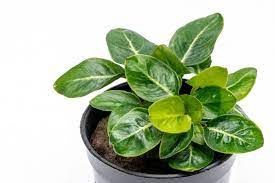Anubias barteri var. nana 'Stardust'
Anubias barteri var. nana ‘Stardust’ – Stardust Anubias
Anubias barteri var. nana ‘Stardust’ is a compact and elegant cultivar of the popular Nana Anubias. Its small, dark green leaves are accented with delicate white speckles, giving it a unique “stardust” appearance that adds charm and texture to aquascapes. Perfect for foreground, midground, or attachment to rocks and driftwood, it’s ideal for aquarists looking to create focal points with subtle, eye-catching detail.
Care Tips for Anubias barteri var. nana ‘Stardust’:
Light Requirements:
-
Prefers low to moderate light. It thrives in low-tech aquariums but can tolerate brighter conditions if kept out of direct, intense lighting, which may cause algae buildup on its speckled leaves.
Water Parameters:
-
Temperature: 72–82°F (22–28°C)
-
pH: 6.0–7.5
-
Hardness: Soft to moderately hard water; adaptable to a variety of conditions
Substrate & Planting:
-
Like other Anubias, ‘Stardust’ does not require planting in substrate. Attaching it to rocks or driftwood is best, preventing the rhizome from rotting.
Growth Rate:
-
Slow-growing and low-maintenance, perfect for beginners or aquascapers seeking a plant that maintains a neat, compact form.
Pruning:
-
Remove yellowing or damaged leaves to maintain plant health and appearance. Be cautious not to cut the rhizome or roots.
Fertilization:
-
Occasional gentle dosing with liquid fertilizers can enhance leaf health, but heavy fertilization isn’t necessary.
Positioning in the Tank:
-
Suited for foreground or midground placement. Its compact size and speckled leaves make it a charming focal point in smaller or larger aquascapes.
Interesting Facts:
-
Unique Appearance: The white speckles give the Stardust Anubias a shimmering, starlike effect that stands out among green foliage.
-
Durable and Hardy: Like other Anubias species, it tolerates a range of water conditions, temperature fluctuations, and light levels.
-
Slow Growth, Long Lifespan: Its slow growth means minimal maintenance, and it can live for many years, making it a long-term aquarium companion.
-
Perfect for Low-Tech Tanks: Its hardy nature allows it to thrive even in setups without CO₂ injection or high-intensity lighting.
Fun Fact: The name “Stardust” perfectly captures the plant’s delicate, speckled leaves, which shimmer subtly under aquarium lighting—making it a standout even in low-light tanks.

